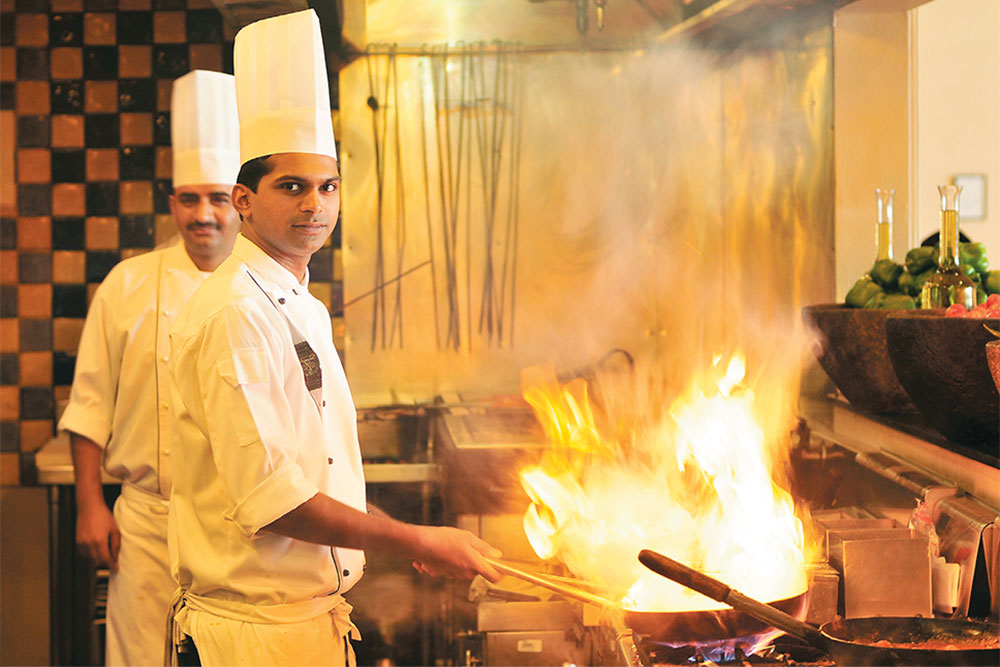Perhaps it has something to do with getting older, but it seems that increasingly, while eating out, I like my meals customised. Do I need the quantity of salt that is standard dining for most? Can the shellfish in paella be replaced with just fish? Most restaurants will either decline or simply replace the ingredients instead of cooking the dish from scratch. Perhaps this is inevitable, as individualisation for all or even most diners will throw any kitchen out of gear. Systems are put into place specifically to avoid such possibilities. And yet, in a chef-led restaurant, experimentation is much more conceivable, unless the chef is a tyrant, or runs too many restaurants.
Sometimes restaurants fail to make the simplest of improvisations. At our club — which does a fantastic Indian spread — getting them to change even the tadka in a dal or raita is impossible despite explaining exactly how it should be done. Which is why I approve of Indian restaurants, which ask exactly how you would like the tempering.
If some chefs are flexible, others can be cussed, wanting to serve a dish exactly as they have conceived it, and woe betide anyone who doesn’t appreciate the effort.This is most true of chefs in the West, who tend to be as bossy as they are talented. Indian chefs are more compromising, perhaps because India’s dining culture is so diverse that you need to cater to someone who eats onions but not garlic, or pork but not beef for reasons other than taste.
The reason I’ve been thinking about this is because at Art 14 London, a new addition to art fairs, four chefs have been invited to serve their finest. These include Florence Knight, head chef of Polpetto, Rainer Becker of Zuma and Roko, Jason Atherton of Pollen Street Social and Richard Corrigan of Corrigan’s Mayfair — cult names in London with the odd appearance on television.
They have been chosen primarily for their interest in collecting art, whether personally or for their restaurants, and the artists they collect range from the chic to the expensive.
Chefdom is still a nascent business in India, but chefs are becoming celebrities faster than you can count to ten. Whether they collect art or not, they bring a passion to the restaurants they helm. Which is why I would have no problem eating in restaurants that push their chefs as brands. And though the cuisines and food they present may be very different, finding yourself at the receiving of a handmade meal by any of them is at least as exciting as buying your first Louis Vuitton bag.
Hotels were the first to highlight chefs, and I remember ITC’s Imtiaz Qureshi personally calling on regulars at his Bukhara and Dum Pukht restaurants. At the Taj, chefs Hemant Oberoi and Ananda Solomon are the face of their excellent restaurants, including Wasabi (started by Japanese chef Masahari Moromoto) and Masala Kraft.
Not all the big brand names associated with restaurants are chefs, however. At popular eatery Olive, AD Singh can’t cook, but he picked a winner in Sabyasachi ‘Saby’ Gorai, while Old World Hospitality’s Rohit Khattar bet on Manish Mehrotra. On the other hand, Nikhil Chib at Busaba can cook up a storm. And Ritu Dalmia not only cooks, she travels around Europe cooking and picking up secrets from others for her television show. It makes for excellent theatre — and teaches chefs a new trick or two, which is hardly bad news for diners like me.
—The author is a Delhi-based writer and curator











